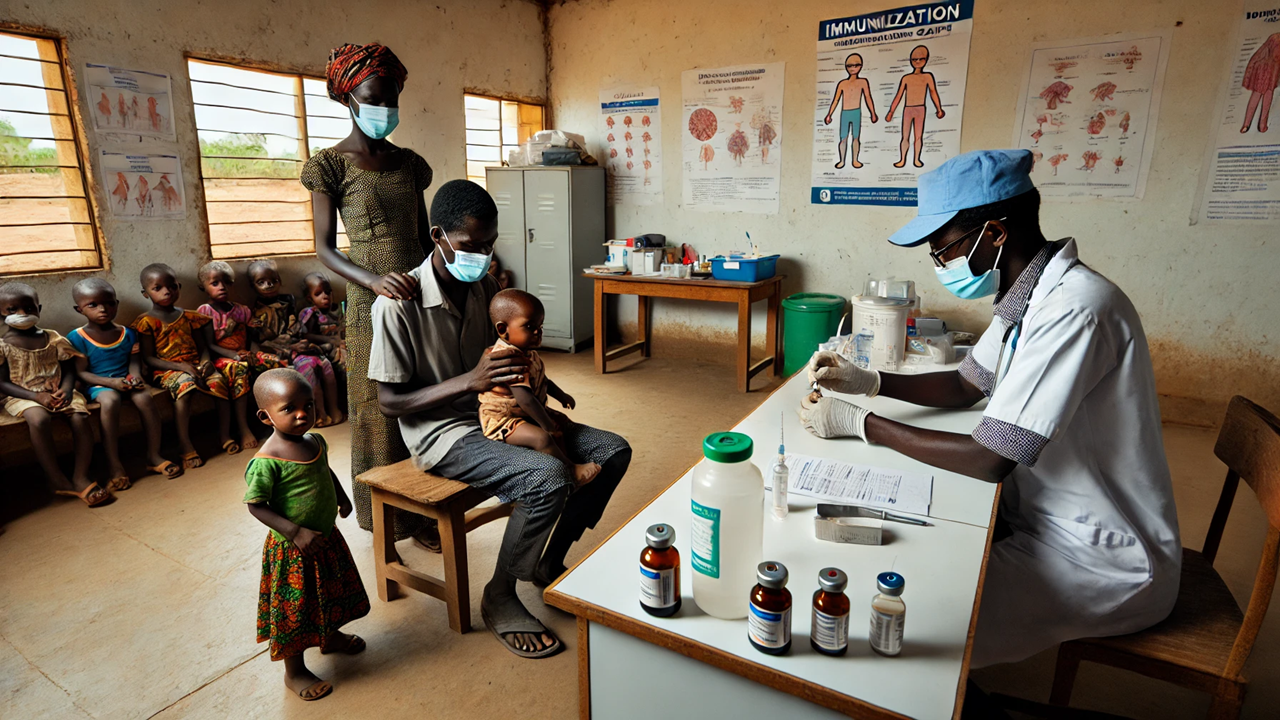Global Childhood Vaccination Progress Slows Amid Conflict, Misinformation: WHO and UNICEF Report
“Vaccines save lives, allowing individuals, families, communities, economies and nations to flourish,” said Dr Tedros Adhanom Ghebreyesus, WHO Director-General.

Global immunization efforts made modest gains in 2024, with 89% of infants (around 115 million) receiving at least one dose of the diphtheria, tetanus and pertussis (DTP)-containing vaccine and 85% (109 million) completing the recommended three-dose series. These figures represent a year-over-year increase of 171,000 children receiving at least one vaccine and 1 million completing the full series, according to new data released by the World Health Organization (WHO) and UNICEF.
While the growth is slight, global health leaders regard it as a positive step amid mounting global challenges such as conflicts, shrinking health budgets, misinformation, and weakened health systems. However, with nearly 20 million infants missing at least one dose, including 14.3 million “zero-dose” children who did not receive any vaccine at all, urgent action is needed to get back on track with the Immunization Agenda 2030 goals.
“Vaccines save lives, allowing individuals, families, communities, economies and nations to flourish,” said Dr Tedros Adhanom Ghebreyesus, WHO Director-General. “Although it’s encouraging to see progress, we still have a lot of work to do.”
Widening Inequities in Immunization Access
The new data, drawn from 195 countries, reveals persistent and worsening inequities. While 131 countries have consistently achieved 90% or higher DTP1 (first dose) coverage since 2019, only 17 of the countries below this threshold have improved in the past five years. Alarmingly, 47 countries have experienced stagnation or backsliding, including 22 that had previously surpassed the 90% coverage benchmark.
Conflict and humanitarian crises remain key drivers of these setbacks. A quarter of the world’s infants live in just 26 fragile or conflict-affected countries, but they account for half of all unvaccinated children globally. In these areas, the number of unvaccinated children grew from 3.6 million in 2019 to 5.4 million in 2024—a worrying 50% increase.
Gavi-Supported Countries Lead in Recovery, But Threats Persist
In contrast to this trend, 57 low-income countries supported by Gavi, the Vaccine Alliance, showed improvements. These countries collectively reduced the number of un- and under-vaccinated children by 650,000 over the past year. Yet upper-middle and high-income countries, traditionally leaders in immunization, are now showing early signs of slippage—a red flag for potential disease resurgence even in well-resourced settings.
“Even small declines in immunization coverage can dramatically raise the risk of disease outbreaks,” warned Catherine Russell, UNICEF Executive Director. “Millions of children still lack protection, and that should worry us all.”
Expanded Vaccine Coverage: HPV, Measles, and More
Despite these challenges, countries are expanding protection against a broader set of diseases. In particular, coverage with the human papillomavirus (HPV) vaccine saw a significant increase in 2024, with 31% of eligible adolescent girls receiving at least one dose—up from 17% in 2019. The rise was largely driven by single-dose vaccine regimens and national scale-ups supported by Gavi.
In addition, measles coverage improved modestly, with 84% of children receiving the first dose and 76% the second dose. However, this still falls short of the 95% coverage needed to prevent outbreaks. Over 30 million children remain underprotected, and the number of countries experiencing large or disruptive measles outbreaks nearly doubled—from 33 in 2022 to 60 in 2024.
Immunization Setbacks: The Impact of Misinformation and Instability
The report warns that vaccine misinformation, growing funding shortfalls, and conflict-driven disruptions are threatening to unravel decades of immunization progress. Even where demand remains high, access barriers and declining trust jeopardize routine childhood vaccinations.
“We must act now with determination to overcome barriers like shrinking health budgets, fragile health systems and misinformation,” said Russell. “No child should die from a disease we know how to prevent.”
Strategic Recommendations for Global Immunization Recovery
To close gaps and reaccelerate progress, WHO and UNICEF are calling for urgent action across five strategic areas:
-
Close the Funding Gap for Gavi’s Next Cycle (2026–2030): Secure the financial resources needed to protect millions of children in low-income countries and enhance global health security.
-
Strengthen Immunization in Conflict and Fragile Settings: Deliver vaccines to zero-dose children and prevent deadly outbreaks in the most vulnerable communities.
-
Prioritize Locally Led, Domestic Investment Strategies: Embed immunization in national primary health care systems to improve sustainability and equity.
-
Counter Misinformation with Evidence-Based Approaches: Scale public trust-building campaigns and ensure vaccine information is accurate, accessible, and culturally relevant.
-
Invest in Stronger Data and Disease Surveillance Systems: Use real-time data to guide program delivery and target resources for maximum impact.
The Promise of Protection Must Not Be Lost
Though 2024 brought encouraging gains in global immunization coverage, the momentum is fragile. With 14.3 million zero-dose children and millions more underprotected, the promise to protect every child from preventable disease is at serious risk.
As Dr. Sania Nishtar, CEO of Gavi, aptly put it:
“Population growth, fragility and conflict present major hurdles to achieving equity, leaving the most vulnerable children and communities at risk. Continued commitment from governments and partners will be critical to saving lives.”
To preserve and build on the legacy of vaccines as one of humanity’s greatest public health achievements, world leaders must act decisively, invest smartly, and collaborate widely. The health of the next generation depends on it.
ALSO READ
President Murmu Lauds AIIMS Bhubaneswar's Role in Public Health at Convocation
Senegal Eliminates Trachoma: A Major Milestone in Africa’s Public Health Journey
India's Striking Progress in Child Vaccination Reduces Zero-Dose Children by 43%
India accounts for 6.4% of global zero-dose children in 2024: UN
MCD Initiatives Strengthen City's Public Health and Infrastructure










